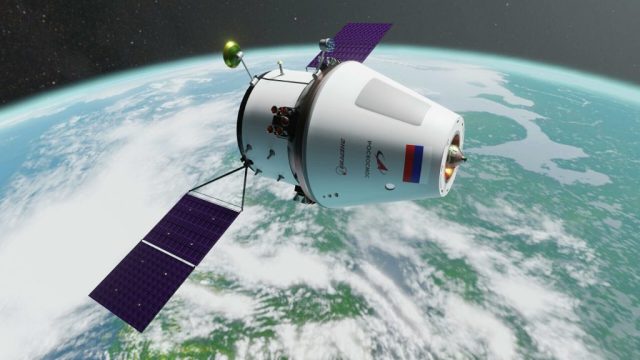Moscow. December, 31st. INTERFAX - During the first test launch of the Angara manned launch vehicle from the Vostochny cosmodrome in December 2023, a mock-up of the new Eagle spacecraft will be used as a payload, and not its finished version, said Dmitry Rogozin, head of Roscosmos.
"To put an absolutely ready, regular ship on the Angara, which has never flown from the second stage of the Vostochny cosmodrome. Well, I'm sorry, this is a very risky operation, to put it mildly," Rogozin said during a New Year's Eve video call with the Russian ISS crew on Friday.
"Therefore, we will work out, first of all, in December 2023, a bundle - the new launch complex of the Vostochny cosmodrome, the Angara rocket, respectively, and we will work out the entire interface with the ship, which will have the necessary amount of equipment. But it will not be a full-time ship yet, because, once again, the risk is too high," Rogozin explained.
According to him, after this launch, the emergency rescue system of the ship should be tested at Vostochny. This system should "rip" the ship from the rocket standing at the launch and take it to a safe place and gently land it. It is also planned to test the "shooting" of the ship during the flight of the Angara rocket.
On October 4, the general designer of the rocket and space corporation Energia, Vladimir Solovyov, announced that the launch of the new Russian manned spacecraft Eagle could be postponed.
The Eagle spacecraft can be part of a complex for flights to other planets or asteroids, Igor Khamits, the chief designer of the spacecraft, said earlier.
Currently, Russia is developing a reusable ship "Eagle" as part of the experimental design work "Federation". The first flight of the ship without a crew is scheduled for 2023, with a crew - for 2025. The spacecraft is designed to deliver people and cargo to space stations in near-Earth orbit, and is also one of the key elements of the existing concept of lunar exploration. To create it, technologies are used that sometimes have no analogues in the world of cosmonautics.

